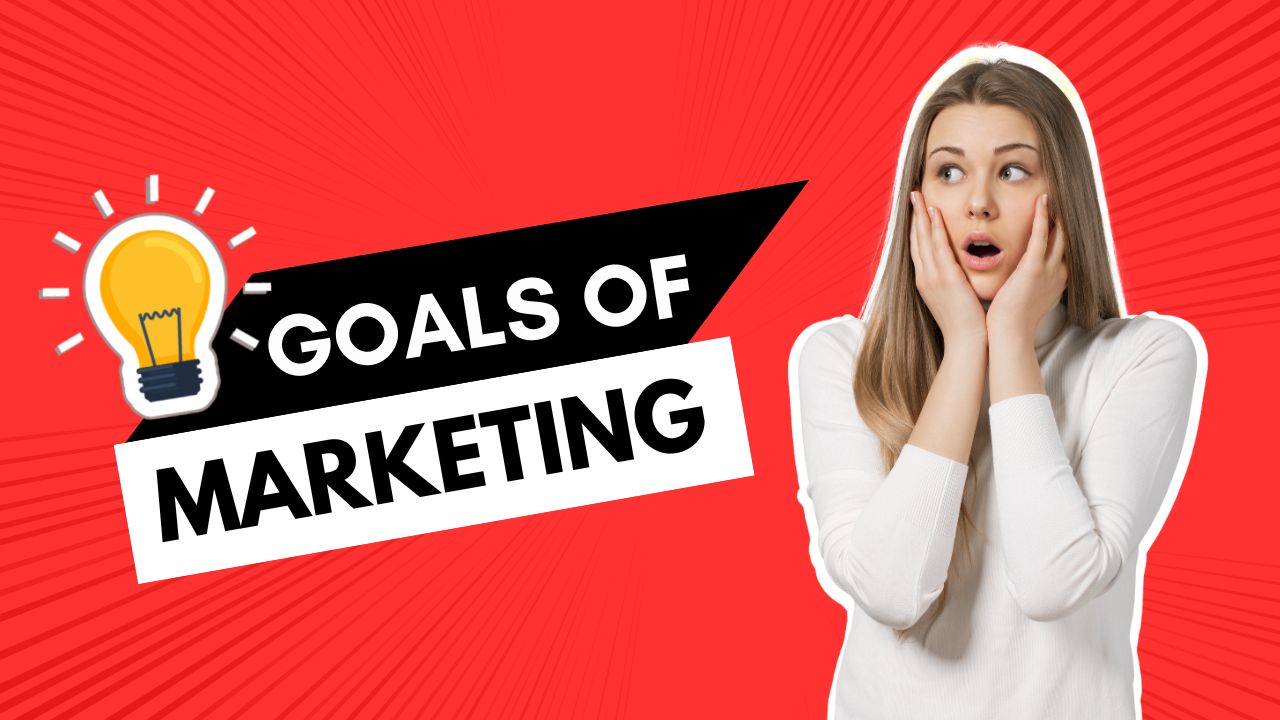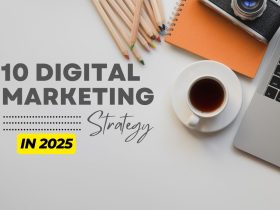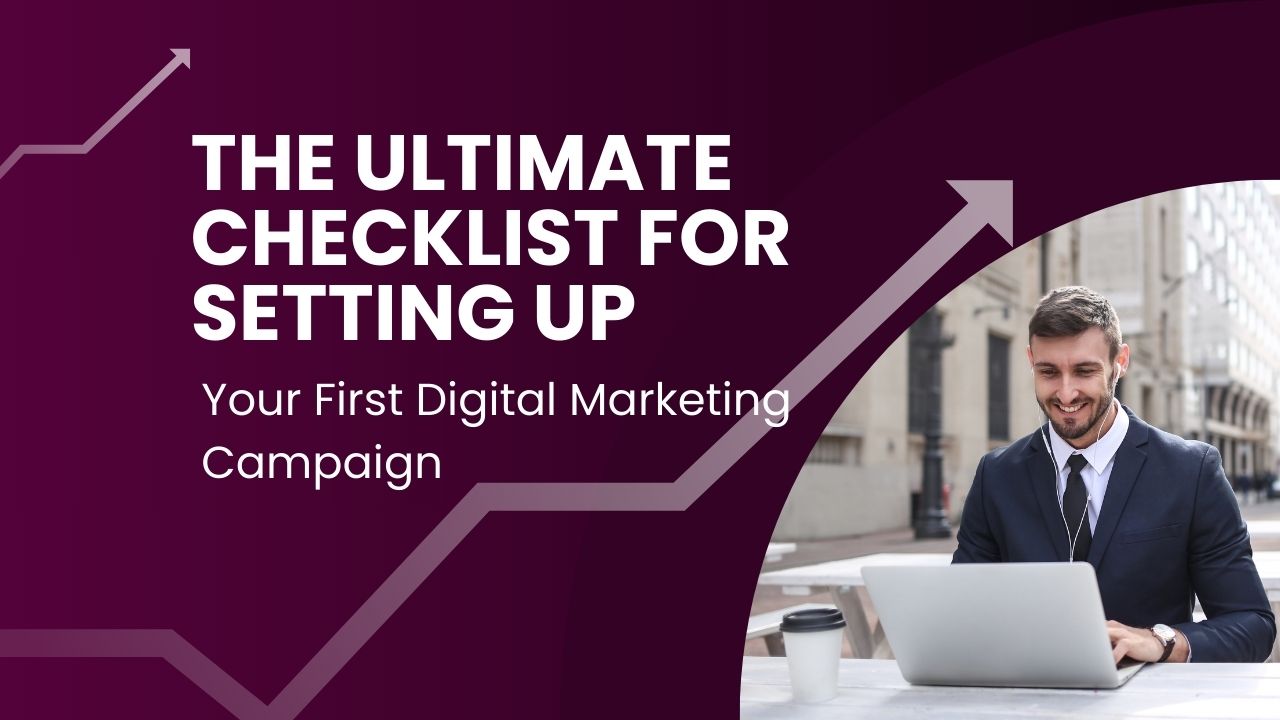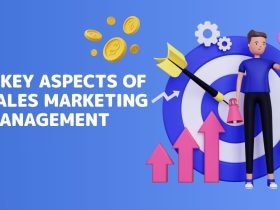Foxysales.com – Embarking on your first digital marketing campaign can feel like venturing into uncharted territory. With so many strategies, tools, and techniques available, it’s easy to get overwhelmed. That’s why we’ve created The Ultimate Checklist for Setting Up Your First Digital Marketing Campaign. This beginner-friendly guide is packed with essential steps, practical tips, and proven methods to help you build a solid foundation for your marketing efforts. Whether you’re launching a small business or expanding your online presence, this guide has everything you need to get started.
Why Your First Digital Marketing Campaign Matters
Every successful marketing journey begins with a clear plan. A digital marketing campaign allows you to connect with your target audience, boost brand awareness, and drive sales through strategic online channels. By setting up your first campaign effectively, you lay the groundwork for future growth and sustainability.
The Ultimate Checklist for Setting Up Your First Digital Marketing Campaign
Follow this step-by-step guide to ensure you cover all the essential aspects of your campaign. From planning to execution, this checklist is your roadmap to success.
1. Define Your Goals and Objectives
Before diving into tools and tactics, it’s crucial to identify what you want to achieve. Your goals should follow the SMART criteria:
– Specific
Your goals should be clear and well-defined. Avoid vague statements like “I want to grow my business.” Instead, specify exactly what you want to achieve. For example:
- Non-Specific Goal: Increase brand awareness.
- Specific Goal: Gain 1,000 new followers on Instagram within the next three months.
When your goals are specific, it becomes easier to create strategies and measure your success.
– Measurable
A good goal must be quantifiable so that you can track your progress and determine whether you’ve succeeded. Incorporate numbers, percentages, or other data-driven indicators. For instance:
- Non-Measurable Goal: Improve email marketing.
- Measurable Goal: Achieve a 20% increase in email open rates over the next quarter.
With measurable goals, you can track performance through analytics tools and make data-informed decisions.
– Achievable
While it’s good to aim high, your goals should still be realistic and attainable based on your resources and current circumstances. Setting overly ambitious targets can lead to frustration and burnout. For example:
- Unrealistic Goal: Increase website traffic by 500% in one month with no additional budget.
- Achievable Goal: Grow website traffic by 20% over the next three months by investing in SEO and content marketing.
Setting achievable goals motivates your team and ensures steady progress.
– Relevant
Your goals should align with your overall business objectives and have a meaningful impact. Ask yourself: Does this goal support my broader mission? For example:
- Irrelevant Goal: Create five TikTok videos for a B2B software company (when your audience is primarily on LinkedIn).
- Relevant Goal: Generate 50 qualified leads via LinkedIn ads for your B2B product.
Relevance ensures your efforts contribute to your long-term success.
– Time-Bound
Every goal should have a clear deadline to maintain focus and urgency. Without a timeline, you might delay or lose track of your objectives. For example:
- Non-Time-Bound Goal: Increase social media engagement.
- Time-Bound Goal: Increase social media engagement by 25% within the next 90 days.
Deadlines help you stay organized and make it easier to measure progress at specific intervals.
💡 Example: If your goal is to increase website traffic, set a target like “gain 5,000 unique visitors in the next three months.”
2. Know Your Target Audience
A successful digital marketing campaign begins with understanding your audience. Use these steps to create a buyer persona:
- Demographics: Age, gender, location, and income level.
- Psychographics: Interests, values, and pain points.
- Behavioral Data: Online habits, preferred platforms, and purchasing patterns.
💡 Pro Tip: Utilize tools like Google Analytics or Facebook Audience Insights to gather data about your potential customers.
3. Choose the Right Marketing Channels
Different platforms cater to different audiences. Your choice should align with your target audience’s preferences and your campaign goals. Common channels include:
- Social Media Marketing: Ideal for brand awareness and engagement.
- Email Marketing: Effective for nurturing leads and driving conversions.
- Content Marketing: Great for building authority and attracting organic traffic.
- Pay-Per-Click (PPC): Best for immediate visibility and targeted campaigns.
4. Set a Realistic Budget
Budgeting ensures you allocate resources efficiently without overspending. Break down your budget into categories:
- Ad spend
- Content creation
- Tools and software
- Analytics and reporting
💡 Example: If you’re running a PPC campaign, allocate a specific percentage of your budget for testing before scaling.
5. Create Compelling Content
Content is the backbone of your digital marketing campaign. Focus on creating high-quality, relevant, and engaging materials. Consider these formats:
– Blog Posts: Attract Organic Traffic
Blog posts are one of the most effective ways to share valuable insights with your audience while improving your website’s visibility on search engines. By answering questions, solving problems, or offering tips, you can position your brand as a trusted source of information.
- Example: A fitness brand might publish a blog post titled “10 Beginner Exercises for Weight Loss at Home” to attract health-conscious readers.
- Benefits: Blogs can drive organic traffic through SEO, establish authority, and nurture leads over time.
– Videos: Boost Engagement
Video content is highly engaging and versatile, making it ideal for platforms like YouTube, Instagram, TikTok, and even your website. Videos can convey messages quickly and leave a lasting impression.
- Example: A skincare company might create a tutorial video on “How to Build a Simple Nighttime Skincare Routine.”
- Benefits: Videos can increase engagement, improve brand recall, and resonate with audiences who prefer visual learning.
– Infographics: Shareable Visuals for Presenting Data
Infographics are perfect for condensing complex information into an easy-to-digest, visually appealing format. They’re especially effective for sharing statistics, comparisons, or processes.
- Example: A tech startup could create an infographic titled “5 Ways AI is Transforming Small Businesses” to showcase key data points.
- Benefits: Infographics are highly shareable, drive social media engagement, and help simplify intricate concepts.
– Case Studies: Showcase Your Expertise and Results
Case studies highlight your success stories, providing real-world examples of how your products or services have made a positive impact. They are excellent for building trust and credibility with potential clients.
- Example: A marketing agency might share a case study on “How We Increased Organic Traffic by 120% for a Local Restaurant.”
- Benefits: Case studies demonstrate your expertise, offer social proof, and help convince leads to take action.
Why Focus on Quality, Relevance, and Engagement?
- Quality: High-quality content reflects professionalism and builds trust with your audience.
- Relevance: Tailoring content to your audience’s interests and needs ensures it resonates with them.
- Engagement: Interactive and compelling content keeps your audience involved, increasing the likelihood of conversions.
By strategically using different content formats, you can address diverse audience preferences, improve reach, and drive better results for your digital marketing campaign.
💡 Tip: Use storytelling techniques to make your content relatable and memorable.
6. Optimize for SEO
Search Engine Optimization (SEO) is key to driving organic traffic. Follow these best practices:
- Research keywords using tools like Google Keyword Planner.
- Use keywords naturally in titles, headers, and body content.
- Optimize meta descriptions and image alt texts.
- Ensure your website is mobile-friendly and fast-loading.
💡 Example: For this article, we optimized for keywords like “digital marketing campaign tips” and “beginner digital marketing guide.”
7. Leverage Social Media
Social media platforms are powerful tools for reaching your audience. Here’s how to maximize their potential:
– Post Regularly and Maintain a Consistent Tone
Consistency is key to building and maintaining an active presence on social media. Regular posting keeps your audience engaged and ensures your brand stays top-of-mind.
- Tip: Develop a content calendar to plan posts in advance and maintain a steady flow of updates.
- Consistent Tone: Your tone should reflect your brand’s personality, whether it’s professional, casual, or humorous, to create a cohesive and recognizable identity.
- Example: A luxury fashion brand might use an elegant and sophisticated tone across all posts, while a fitness brand might opt for an energetic and motivational voice.
– Use Hashtags to Increase Visibility
Hashtags help categorize your content, making it easier for users to discover your posts. By using the right hashtags, you can expand your reach and attract new followers.
- Tips for Hashtag Use:
- Combine trending hashtags with niche-specific ones (e.g., #DigitalMarketing + #SmallBusinessTips).
- Avoid overloading your posts with too many hashtags—stick to 5–10 relevant ones.
- Monitor popular hashtags in your industry to stay updated on trends.
- Example: A travel agency might use hashtags like #TravelGoals, #Wanderlust, and #AffordableAdventures to attract travelers.
– Engage with Your Audience Through Comments and Direct Messages
Engagement is the heart of social media marketing. Building relationships with your audience fosters loyalty and boosts visibility.
- How to Engage:
- Respond to comments promptly and thoughtfully.
- Like and share user-generated content to show appreciation.
- Use direct messages for personalized interactions, such as answering inquiries or thanking customers for their support.
- Example: If a customer tags your brand in a post, leave a comment to acknowledge their contribution, such as “Thanks for sharing your amazing experience!”
– Run Targeted Ads for Specific Demographics
Social media platforms like Facebook, Instagram, and LinkedIn offer powerful advertising tools that allow you to target specific demographics based on age, location, interests, behavior, and more.
- Steps to Create Targeted Ads:
-
-
- Define your campaign objective (e.g., increase website traffic or generate leads).
- Identify your audience by selecting specific demographic filters.
- Design compelling visuals and write persuasive copy.
- Monitor performance metrics like click-through rate (CTR) and cost per click (CPC) to refine your strategy.
-
- Example: A restaurant might run ads targeting local users aged 25–40 who enjoy dining out, promoting their new weekend brunch menu.
💡 Pro Tip: Experiment with platforms like Instagram Stories or LinkedIn Articles depending on your target audience.
8. Run Paid Advertising Campaigns
For immediate results, consider running PPC campaigns on platforms like Google Ads or Facebook Ads. Steps to follow:
- Define your campaign objective (e.g., lead generation).
- Set a daily or lifetime budget.
- Choose your target audience.
- Design eye-catching creatives and write compelling ad copy.
- Monitor performance and adjust as needed.
💡 Case Study Example: A small bakery increased its local orders by 30% by running geotargeted ads on Facebook.
9. Monitor and Measure Performance
Tracking your campaign’s performance is essential for identifying what works and what doesn’t. Use analytics tools to measure:
- Website traffic (Google Analytics).
- Conversion rates (Google Ads).
- Social media engagement (platform-specific insights).
Key Metrics:
- Click-through rate (CTR).
- Return on ad spend (ROAS).
- Cost per acquisition (CPA).
10. Test, Refine, and Repeat
No campaign is perfect on the first try. Testing allows you to improve results over time. Conduct A/B tests for:
– Ad Creatives and Copy
The visuals (ad creatives) and text (ad copy) you use in your ads play a crucial role in capturing attention and driving engagement. With A/B testing, you can test different versions of both to determine which combination resonates most with your audience.
- What to Test:
- Images vs. Videos: Does a static image work better than a short video?
- Headlines: Try different headlines to see which one grabs attention.
- Calls to Action (CTAs): Test different CTAs, such as “Shop Now” versus “Learn More,” to see which prompts more clicks.
- Example: You might create two versions of a Facebook ad: one with a bright, colorful image and one with a more neutral, professional design. You can then compare which ad gets more clicks or conversions.
– Email Subject Lines
The subject line of an email is the first thing your recipients see, and it heavily influences whether they open the email or ignore it. A/B testing your email subject lines can help you determine what grabs attention and encourages recipients to engage with your message.
- What to Test:
- Length: Short subject lines vs. longer, more descriptive ones.
- Tone: A casual, friendly tone versus a more formal approach.
- Urgency: Adding phrases like “Limited Time Offer” vs. “Exclusive Offer Just for You.”
- Example: Test two different subject lines for the same email campaign—one that says “Don’t Miss Our Biggest Sale of the Year!” versus “Shop Now and Save Big on Our Best-Sellers.” Measure which one leads to a higher open rate.
– Landing Page Designs
When users click on your ad or email, they often land on a specific page (a landing page) where you want them to take a particular action, like filling out a form or making a purchase. A/B testing your landing pages allows you to find the design and layout that maximizes conversions.
- What to Test:
- Layout: A simple, minimalist design vs. a more detailed, content-rich layout.
- Form Fields: A long form with multiple fields vs. a shorter, more straightforward form.
- Images and CTAs: Different placements of CTAs (like at the top vs. bottom of the page) or images of your product/service to see which leads to more conversions.
- Example: You could test a landing page with a large hero image and a bold “Buy Now” button versus one with a testimonial section and a smaller “Learn More” button to see which generates more sales.
Why Testing is Important
Testing helps you optimize your campaigns by providing real data on what works best for your audience. Instead of guessing, A/B testing allows you to make informed decisions based on actual performance, leading to improved results over time. Even small changes, like adjusting a headline or switching an image, can have a significant impact on engagement and conversion rates.
By continuously testing and refining your ads, emails, and landing pages, you can progressively improve the effectiveness of your digital marketing campaigns, ensuring that you’re always moving closer to achieving your goals.
💡 Example: Test two different CTAs (e.g., “Sign Up Now” vs. “Learn More”) to see which drives better engagement.
Common Mistakes to Avoid
Even seasoned marketers can slip up. Avoid these pitfalls in your first campaign:
- Lack of Planning: Skipping research and strategy development.
- Ignoring Analytics: Failing to track progress can lead to wasted resources.
- Spamming Content: Overposting can alienate your audience.
- Unclear CTAs: Ambiguous calls to action can confuse potential customers.
Conclusion
Setting up your first digital marketing campaign might seem daunting, but with the right checklist, you can simplify the process and set yourself up for success. Remember, a well-planned campaign is the foundation of effective marketing. By following The Ultimate Checklist for Setting Up Your First Digital Marketing Campaign, you’ll create a roadmap to engage your audience, achieve your goals, and grow your business.
Start small, measure results, and refine your strategy as you learn. If you’re ready to dive into the world of digital marketing, this guide is your first step to a thriving online presence.






